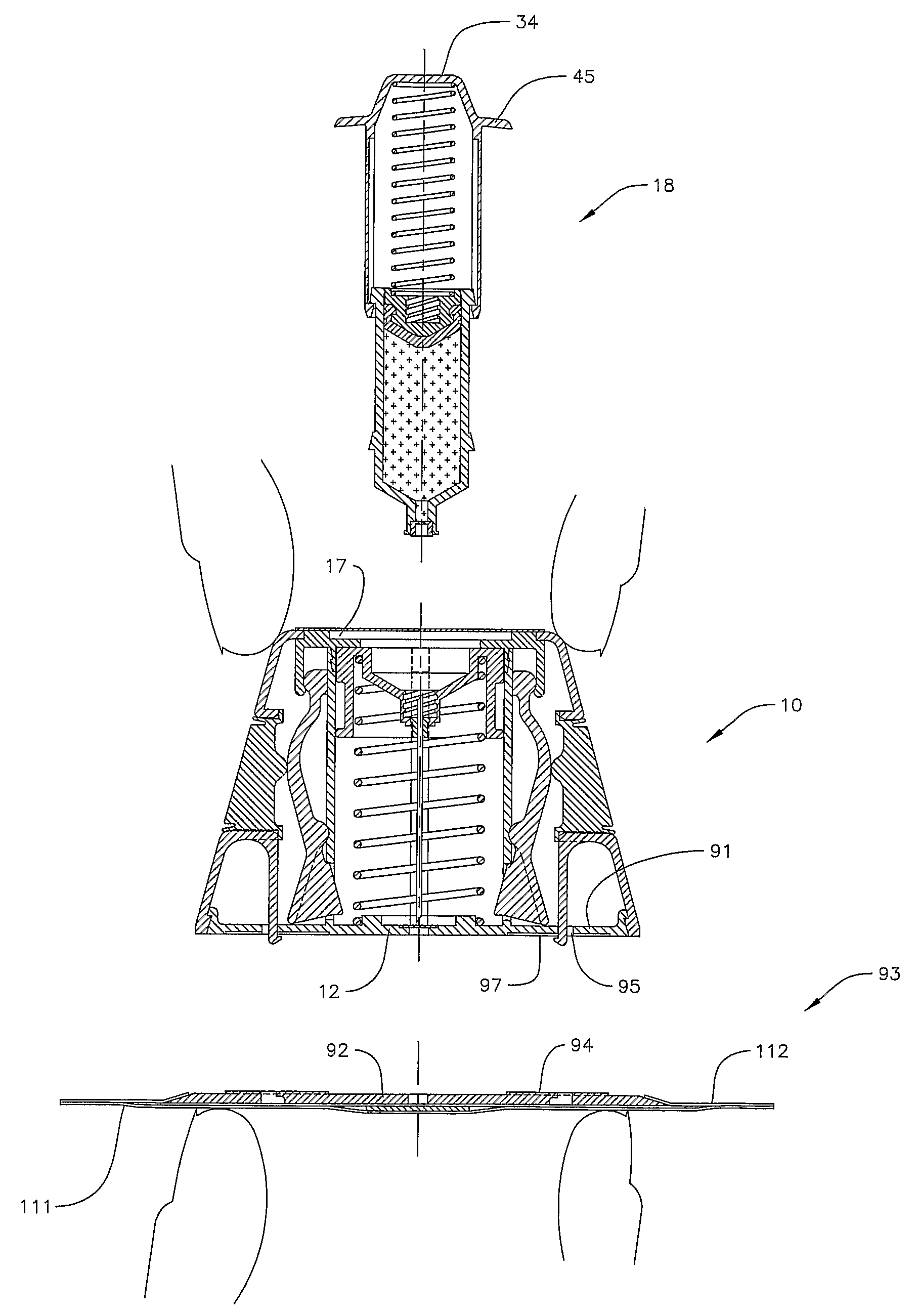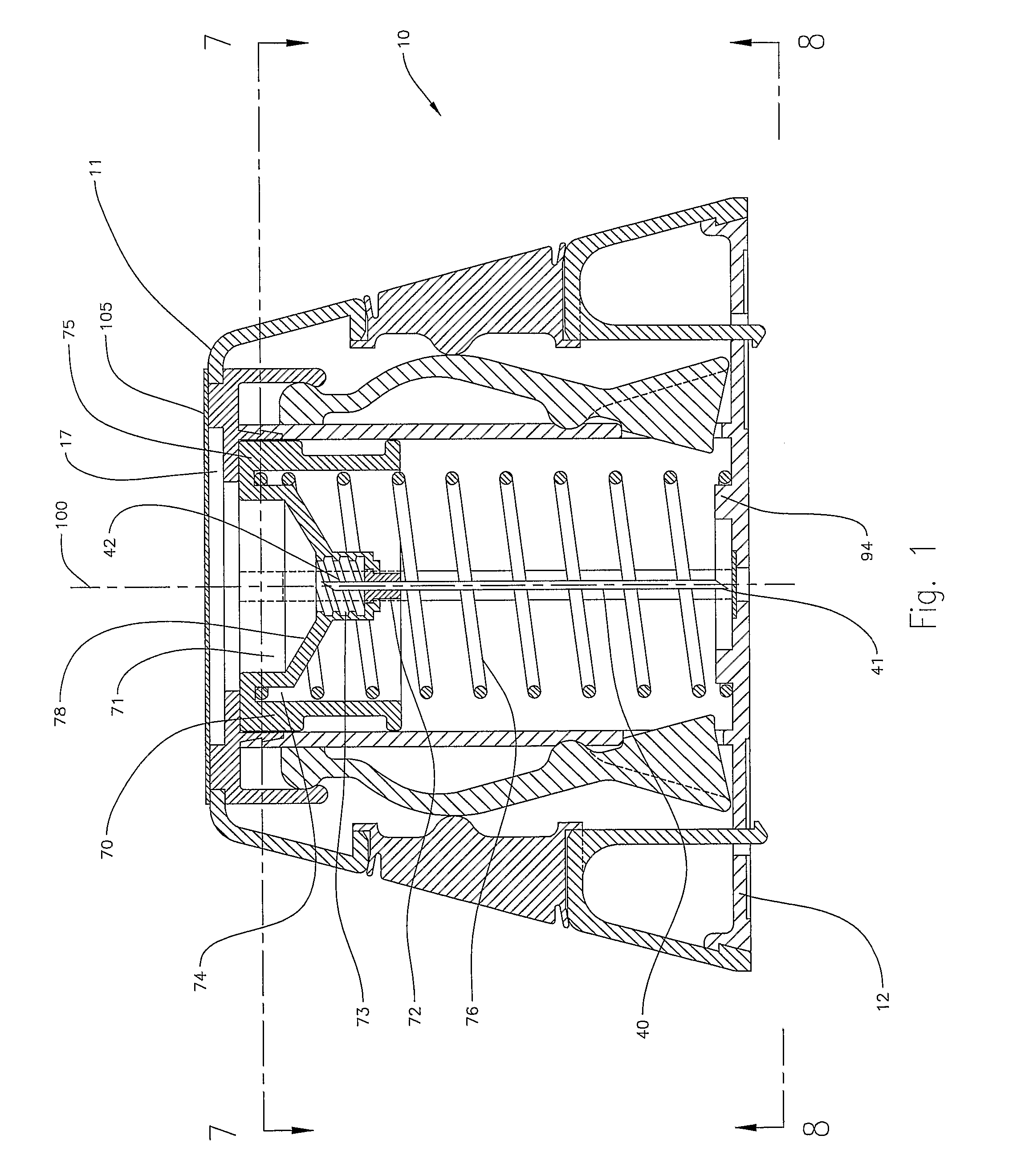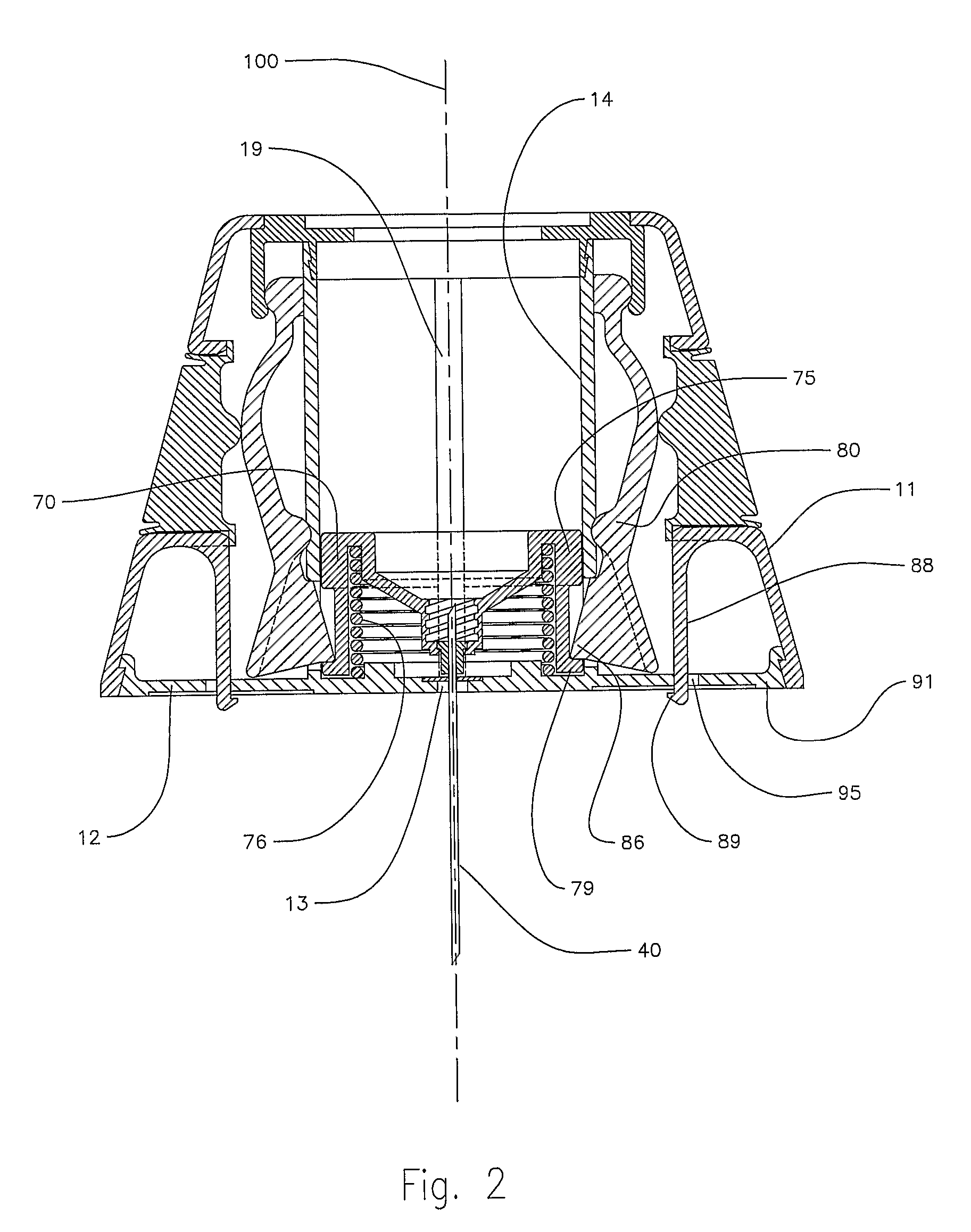Injection device for administering a vaccine
a vaccine and injection device technology, applied in the field of injection devices, can solve the problems of affecting the safety of both medical personnel and children, affecting the safety of children, etc., and achieves the effect of simple and inexpensive preparation and operation, and high degree of safety for both medical personnel
- Summary
- Abstract
- Description
- Claims
- Application Information
AI Technical Summary
Benefits of technology
Problems solved by technology
Method used
Image
Examples
Embodiment Construction
Definitions
[0065]As used herein, “patient” means a mammal, including a person, including a child or infant, or an animal, typically a mammal, on which the device is attached, and into whom the device injects an injectable liquid composition.
[0066]As used herein, unless specified otherwise, the phrase “manually powered” means that the power provided to the device of the present invention to at least insert the injection needle into the patient's body is provided manually by a person, including a medical technician (a nurse, doctor, or other person who can administer the injection) or a patient, by manipulating the injection device with the hands or fingers, or by manipulating an appropriate implement that interacts with the device.
[0067]As used herein, unless specified otherwise, the term “self-administering” describes the ability of the device of the present invention to be held or to hold itself in a position attached to the skin of a patient by a securement means, without requirin...
PUM
 Login to View More
Login to View More Abstract
Description
Claims
Application Information
 Login to View More
Login to View More - R&D
- Intellectual Property
- Life Sciences
- Materials
- Tech Scout
- Unparalleled Data Quality
- Higher Quality Content
- 60% Fewer Hallucinations
Browse by: Latest US Patents, China's latest patents, Technical Efficacy Thesaurus, Application Domain, Technology Topic, Popular Technical Reports.
© 2025 PatSnap. All rights reserved.Legal|Privacy policy|Modern Slavery Act Transparency Statement|Sitemap|About US| Contact US: help@patsnap.com



